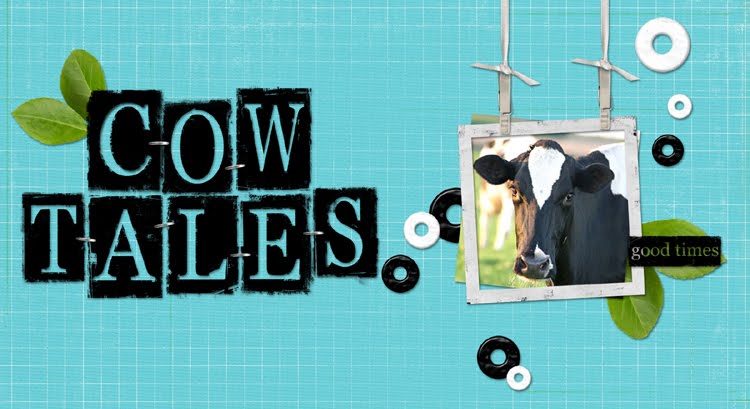When you think lameness, you rightfully focus on feet. But look up two feet and pay closer attention
to the tarsal joints, better known as the hocks. They could be telling a revealing story that
could potentially shed some light on management problems on your dairy. Hock lesions are preventable by focusing on
cow comfort, proper foot trimming, and genetic selection.
You can look across your dairy herd and observe cows with
varying degrees of hairloss, ulceration, and swelling of the hocks. Closely scrutinize both sides of the hocks
because even though the majority of lesions are located on the outside area,
lesions can also be find on the inside region.
Greater than 95% of your herd should possess hocks with no lesions. No more than 5% should have hocks with signs
of hairloss. Though difficult to achieve,
especially in facilities with freestall design flaws or maintenance problems,
no cows should have evidence of hock swelling and ulceration.
The majority of hock lesions are associated with cow comfort
problems. A hock lesion typically starts
out as hairloss from rubbing, friction, and shearing forces on hard
surfaces. As the friction or trauma
persists, either an ulcer or hygroma will form or a bursa, or fluid-filled sac,
will develop to protect the joint from trauma.
With continued and repeated trauma, the bursa may become infected,
turning into an abscess or burst into an ulcer/hygroma.
The majority of hock lesions are created by freestall design
flaws and poor maintenance (lack of grooming or bedding). A lack of bedding, exposing hard surfaces
such as poor or outdated mattresses or freestall bases, will increase
risk. Freestalls assumed to be deeply
bedded may be poorly groomed or compacted resulting in a greater incidence of
hock lesions. Hard, course, or rough
bedding, particularly recycled drywall products or sawdust resembling tree
bark, is extremely abrasive on mattress surfaces and should be avoided. Freestall design resulting in diagonal lying
where the rear legs drape over the rear curb will create hock lesions,
particularly on the inside area of the lock.
The design flaws and poor maintenance issues mentioned
result in excessive restlessness while the cow is lying in the freestall. More frequent leg movements, combined with
the weight of the cow and shear forces increase the risk for the development of
hock lesions. Crushing soft tissue
injuries in cows can occur in 6 hours if lying on hard, unforgiving surfaces.
To prevent hock lesions resulting from freestall design
flaws and poor maintenance, deeply bed the freestalls with a minimum of 4” of
bedding. If diagonal lying is an issue,
deeply bedding will help, however, you will likely need to analyze length of
the bed, the ability for the cow to lunge forward, the height of the brisket
board and distance from rear curb, and neck rail height and distance from the
rear curb. Groom and add bedding
frequently to decrease compaction. If
compaction is an issue particularly with lime, consider adding sawdust in order
to add a “fluff” factor. Avoid very
course bedding.
Swelling of the hock joint is associated with trauma or
arthritis. The greatest risk for trauma
or arthritis occurs in overcrowded pens, facilities with poor footing
conditions, and narrow alleyways.
Awareness of the cow’s time budget is also critical. Overtaxing the time budget and increasing the
time standing will place increased stress on the joints escalating the risk for
trauma and arthritis. During a 24-hr
period, a cow should spend no more than 2.5-3.5 hours outside the pen including
travel to and from the parlor, holding pen standing time, and actual
milking. Daily lock-up or management
rail time should not exceed 1 hour in order to prevent overtaxing the time
budget.
Leg conformation and degree of set to the hock are critical
factors that increase the risk for hock arthritis. Cows that are sickle-hocked (excessive set to
hock), post-legged (excessive straightness to hock joint), or cow-hocked (hocks
pointing toward each other) are at greater risk for arthritis. The angle extremes place excessive forces
over areas of the joints not designed to handle the weight. To compensate, the cows develop arthritis. In some cases, corrective hoof trimming can
alleviate a degree of the condition.
Therefore, the hoof trimmer may need to see the “at risk” cows more
often. Culling problem cows and using
sires that transfer correct foot and leg traits will lead to progress.
Take a moment and observe the hocks of the cows in your
herd. If over 5% of your cows possess
any hairloss, swelling, or ulceration, critically analyze and focus changes on
cow comfort, corrective hoof trimming, and genetic selection. Remember, if the cow loses her legs, you lose
the cow.


Wow what a great blog, i really enjoyed reading this, good luck in your work. Sheep Minerals and Vitamins
ReplyDelete